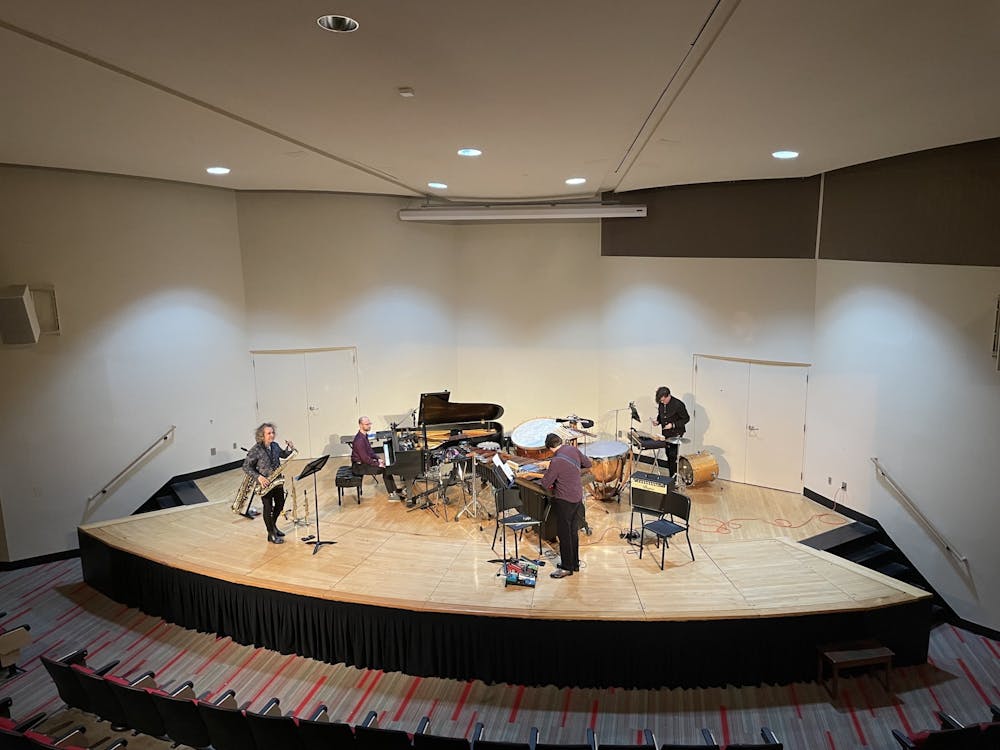Experimental and ethereal, the Hinge Ensemble proved that any sound can tell a descriptive story. The Boston-based quartet visited Otterbein University to perform two lively concerts in the Riley Auditorium on Feb. 10.
The Hinge Ensemble is composed of four instrumentalists: saxophonist Philipp Stäudlin, electric guitarist Dan VanHassel, percussionist Matt Sharrock, and pianist Keith Kirchoff. The group specializes in “cutting-edge contemporary and experimental music, seamless multimedia integration, and the innovative re-imagining of rock and pop songs”.
In the afternoon, the quartet played an arrangement of Julius Eastman’s “Gay Guerrilla” (1979). In a later concert titled “Clockworks," they performed music by Chaya Czernowin, Meshuggah, Katherine Young, Jessie Cox, and Louis Andriessen.
Julius Eastman (1940-1990) was a gay, Black contemporary composer, conductor, singer, pianist, and choreographer who was a prominent figure in New York’s music and arts scene. Eastman is known for his minimalistic compositional style.
“[I] was shocked that more people didn’t know [Julius Eastman’s music]—was always looking for an opportunity to play it,” said artistic director and guitarist Dan VanHassel. “It’s definitely sorta minimalist, that style from the ’70s of early minimalism, so it’s a long piece. Lots of repetition. But, you know, what’s interesting about Eastman is his sort of integration of elements from pop music and jazz and really creating a unique take on the [medium].”
During “Clockworks," the ensemble used a variety of innovative techniques to cultivate different sounds from ordinary and non-traditional instruments.
“Clockworks” focuses on the themes of industrialization within music through the ideas of “humans imitating machines, machines imitating humans, and process music [coming] together."
For Katherine Young’s “Camilles” (2019), the percussionist and pianist used the frequency of walkie-talkies to produce high-pitched droning sounds by moving them closer together. Other existential sounds were used to portray the hypersensitivity of butterflies.
In Chaya Czernowin’s “Shahaf” (2008), the percussionist used ratchets to produce “meat-grinding” sounds. The twirling of the ratchets was so powerful that one literally fell off its “hinge” mid-performance onto the stage.
“The theme of all the pieces [was] dealing with different types of processes or industrialization or technology sort of ideas, so they all each had a very unique kind of take on that idea: sort of [the] dehumanizing effect of technology,” VanHassel said.
“I thought [the performance] was a really interesting way to see a lot of those instruments being used, and I never see them used in that way.” said Maggie Prucha, a Sophomore music education major.
After the COVID-19 pandemic disrupted their performance plans in March 2020, The Hinge Ensemble finally got its Otterbein debut with an unconventional, experimental, and minimalistic performance of "Clockworks."








